Play to your strengths- a quick tip meant to be both encouraging and direct. A reminder to keep your head up if you’re feeling low and do what you already know how to do- the things you are naturally good at.
That piece of advice, as simple as it is, has the potential to create a lasting and positive impact if we choose to lean into it. But, first comes the question: How do I identify my strengths? Or for Educators: How do we help our students self-identify their strengths?
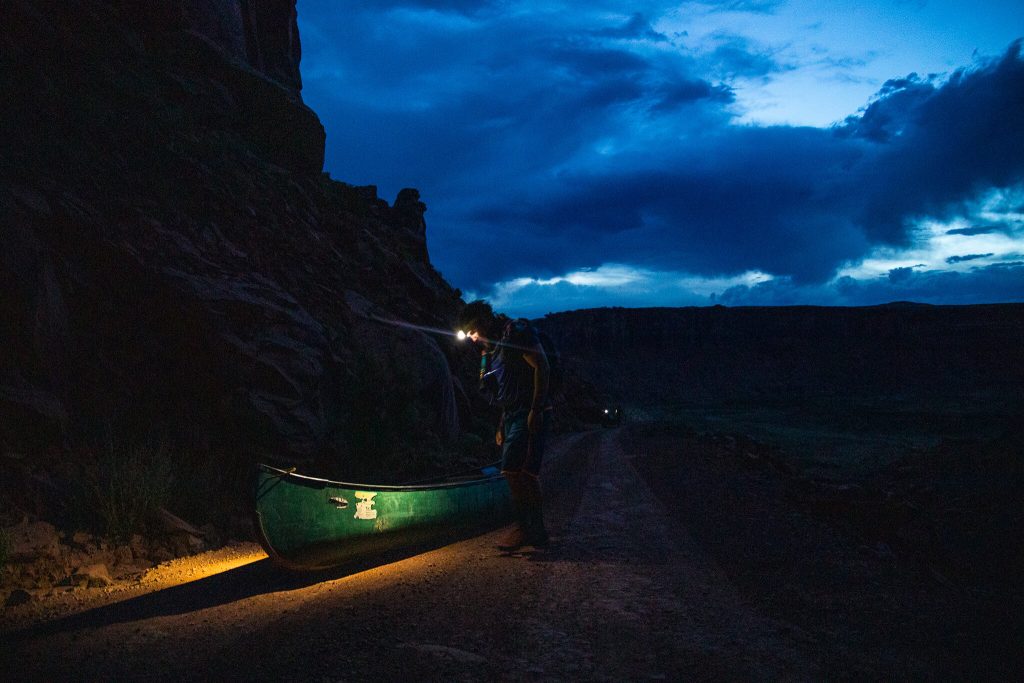
Photo by Sophie MacMillan
On Pathfinder courses, young adults – those in their late teenage years or early twenties – spend a month-long expedition exploring what it means to play to their strengths. Throughout the course, Instructors and students dive into Tom Rath’s StrengthsFinder Test where they identify what their strengths are and learn how to build upon them in both social and economic aspects of their lives. A learning that further allows them to identify and build up the strengths in others.
The test helps individuals identify their top five strengths, out of a list of 34. What’s worth reiterating is that everyone has all 34 strengths, but some are more innate than others. Using this list as a tool for growth on Pathfinder courses helps young adults self-identify their unique strengths. The strengths are categorized under four categories: strategic thinking, relationship building, influencing and executing. Knowing what they are and where they lie within these categories helps you identify the way you interact with your environment and the people within it.
Identifying Strengths: A New Habit
Unfortunately, we’re not used to complimenting ourselves or pointing out the positives in our daily lives as much as we are the negatives. Like any new habit, it takes intentionality, discipline and time to make it something that becomes habitual. If we don’t learn it at a young age, it requires more of us to make it feel natural. So, if you’re new to identifying strengths in yourself and others you can use Tom Rath’s StrengthsFinder assessment, or make your own by brainstorming a list of strengths or writing down some questions to ask yourself such as:
What three words would people use to describe me?
What three words would I use to describe myself?
What qualities do I notice in other people?
Do I prioritize the process of creating something or the end result more?
Do I work better alone or in a group of people?
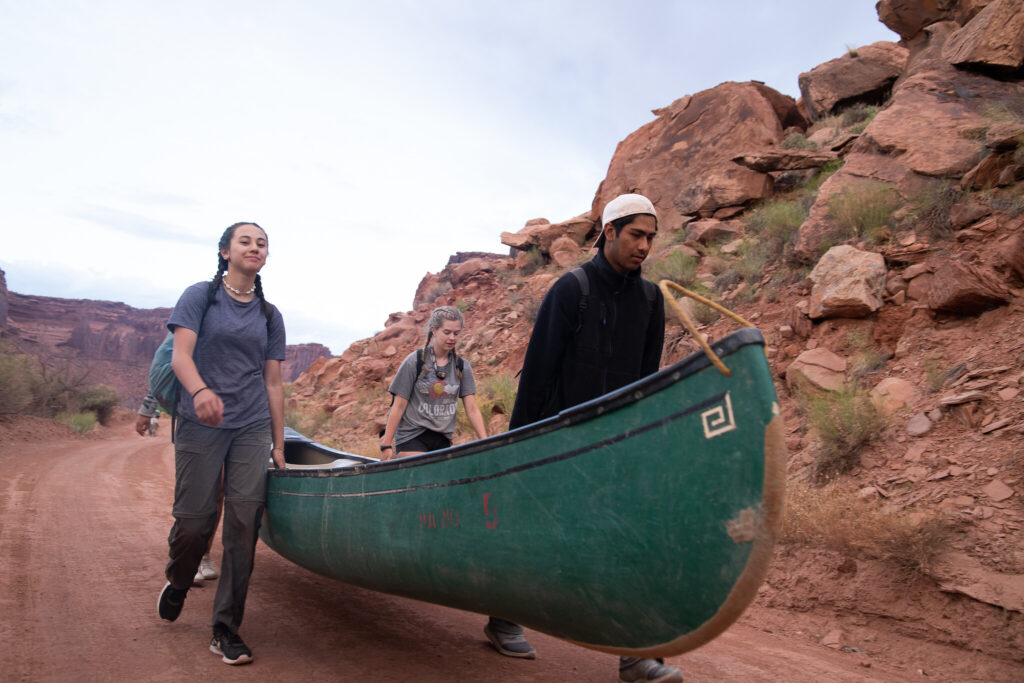
Photo by Sophie MacMillan
Remember: Strengths Can Fluctuate
Like our goals, our strengths can fluctuate. Even if someone has identified their top five strengths, it is possible that through different experiences some are utilized and put into practice more than others. Sometimes we will tap into other strengths through facilitation, communication and leadership skills that we might not have recognized in ourselves prior to the experience.
For example, if the majority of my strengths are relational, but I find myself executing a leadership role among my colleagues, then we have to work together to come up with a plan to ensure that work is being delegated and that people are feeling heard, connected and supported. By combining my relational strengths of fostering connection and support, with new skills such as delegating and planning, I’m able to practice new strengths and give my teammates the opportunity to do the same.
Putting Your Strengths to Practice
Once you’ve identified your strengths- whether you are flying solo, facilitating a workshop with students or co-workers, or trying to bond with some estranged family members- it’s important to put them into practice.
On an expedition, we often refer back to the strengths of the students and the group when we debrief pivotal moments such as the following example:
It’s late in the afternoon and the group is managing their time ineffectively. They are tired, hungry, and still have some miles to travel before reaching their campsite. Ahead of them, they can see the sun begin to lower and bad weather start to develop. This situation can leave room for a lot of stress and miscommunication among the group. Communication and decision-making are put to the test as the crew must work together through individual priorities and group standards to make a plan.
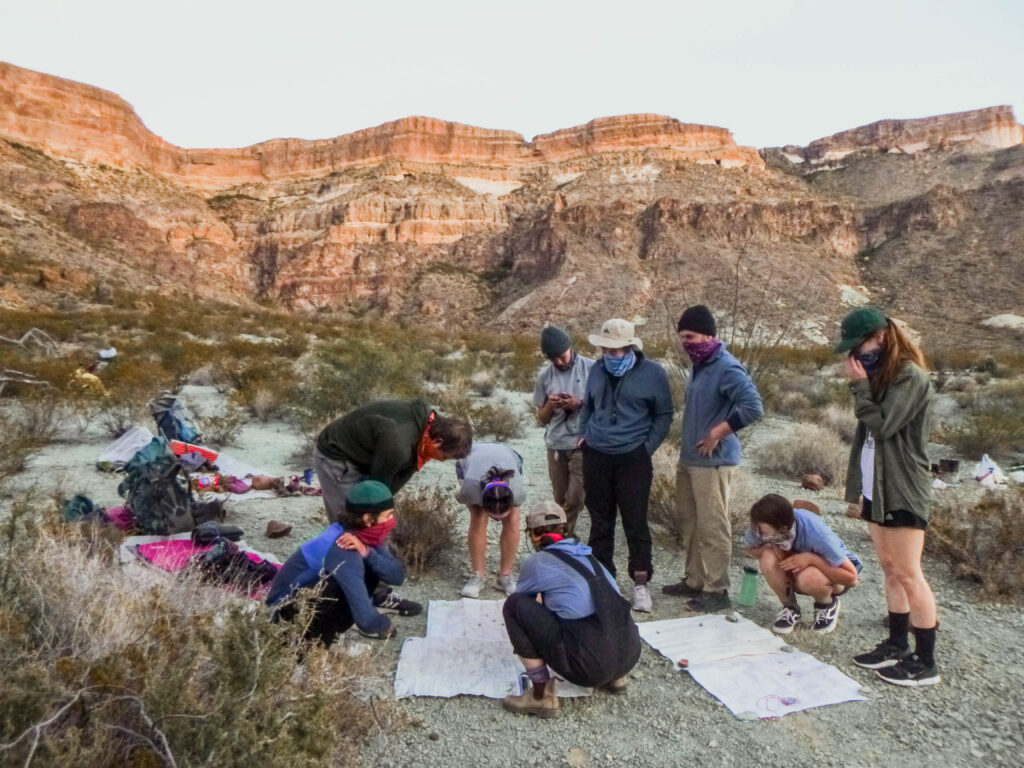
Pathfinder students on a recent expedition in Big Bend National Park work together to create a navigation plan.
As this is experiential education, we the Instructors, allow the scenario to play out with intentionality and supervision. We give the students the autonomy to make their own decisions and problem-solve creatively and collaboratively, knowing that there will be time to debrief the situation afterward.
As facilitators, we know that you learn by doing, and making mistakes is a part of the experience. There will be moments that go wrong, and we should be mindful of our approach. While debriefing scenarios, it can be beneficial to focus the discussion around strengths. Where were individuals’ strengths utilized or not? Using StrengthsFinder as a tool to problem-solve within a group of people that are working towards group and individual goals opens up the conversation to give feedback using a strength-based approach.
The Power of Reflection
One unique aspect of Outward Bound courses are moments of reflection that amount to learning. The reflection aspect helps students pinpoint and analyze how their feelings and behavior directly affect the accomplishment, or failures, of their goals and of those around them. Using a strength-based approach when reflecting helps students reconfigure their goals and define why they matter to them.
If we can take the time to identify and practice our strengths and continue to point them out in others, then investment in our community and its productivity and connectedness will grow.
Using the example above, helping students reflect upon their decision-making in stressful scenarios allows them to see what they prioritized and why. A person whose strengths are innately relational will want to take care of the basic needs of their crew before getting work done. While on the other hand, a student whose strengths are predominately execution-based may want to hustle through tasks before taking time to relax and take care of themselves.
If we can take the time to identify and practice our strengths and continue to point them out in others, then investment in our community and its productivity and connectedness will grow. Next time bad weather approaches and it’s nearing lunchtime, the crew will better understand one another and how to accomplish the goal while ensuring people feel comfortable and supported. They will tap into their strengths, boost up the strengths in others and lean on one another through the challenges- feeling accomplished no matter what the outcome is because they weathered it together.
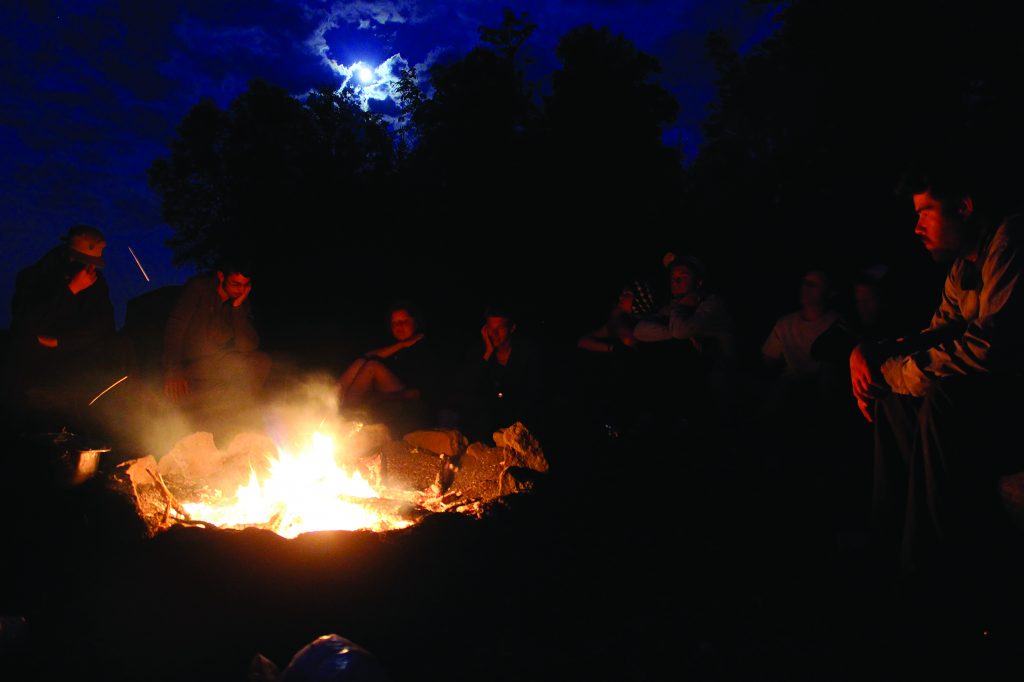
Photo by Caroline Callahan
Building Upon Strengths is Building Upon Relationships
Once we can identify and put into practice our strengths we can build upon them. But when doing so it’s important to ask yourself who benefits from the building. Our strengths are inherent to us, and so is belonging. Whatever community you belong to, prioritize identifying how your role affects others and how your strengths can help make your community a better place for all.
By asking how you can help and by establishing where there is a need, you can utilize your strengths to offer leadership and service in ways that excite you. These guiding questions can help you establish your role within a greater communal goal and help keep you creative, energized, and feeling like your contributions matter because they are what you’re good at and what your community needs.
By asking how you can help and by establishing where there is a need, you can utilize your strengths to offer leadership and service in ways that excite you.
As much daily attention our weaknesses get, we have to remember and prioritize our strengths too. Our strengths invigorate us, they are the fuel that drives our creative engine. They tell us about what we value and care about in our jobs and relationships. Inevitably, we will feel bogged down by our weaknesses but we have the power to shift our thought patterns. If we’re feeling weak in an aspect of our strengths, that means something we are inherently good at or care about, is not being met or acknowledged. Our strengths are a core part of our being. Through experience, recognition and practice, we will feel more confident in ourselves. Finding the right fit for us in whatever aspects of life that make us feel whole.
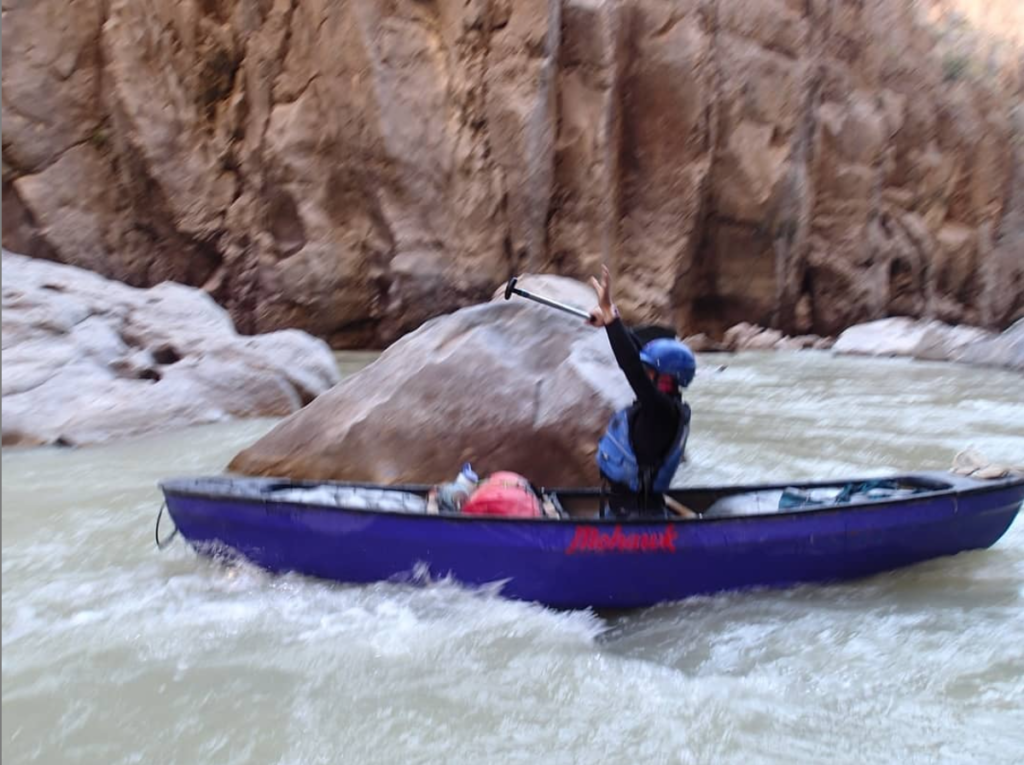
The In-Between and Why it Matters
For many young adults, a Pathfinder course can be the first dose of unexpected delight and hardship thrown their way that puts their strengths into action. Students on course work on specific goals that they set for themselves, such as problem-solving, conflict resolution, leadership and reflection. Spending 30 days in the woods with strangers is no easy feat but is a memorable one. Students come out of courses feeling accomplished both in their own goals and those of their peers which is a unique aspect to Outward Bound courses, no one person’s goals are theirs alone.
We don’t climb mountains, backpack, paddle, or cook over open fires by ourselves- it takes every student on course to be successful. It is a great feeling to accomplish a goal but euphoric when others have stood by your side along the way- celebrating the journey with you.
Confidence is contagious and when we can identify and practice using our strengths in the compartments of our lives that give us meaning- our jobs, families, friends, hobbies- we begin living with purpose and passion.
Pathfinder students return home with shared confidence. A feeling that allows them to navigate the unknown and plan and charter courses according to their dreams.
The same can be true for you. Confidence is contagious and when we can identify and practice using our strengths in the compartments of our lives that give us meaning- our jobs, families, friends, hobbies- we begin living with purpose and passion. When we can make hard decisions with confidence and self-awareness of our strengths and purpose, we will find success no matter what’s thrown our way.
About the Author
Blaine Weiss is an outdoor Instructor who works primarily with the Intercept program of the North Carolina Outward Bound School. With a background in film and writing, she seizes the opportunity to fuse her interests in the creative arts with her love of the outdoors.




